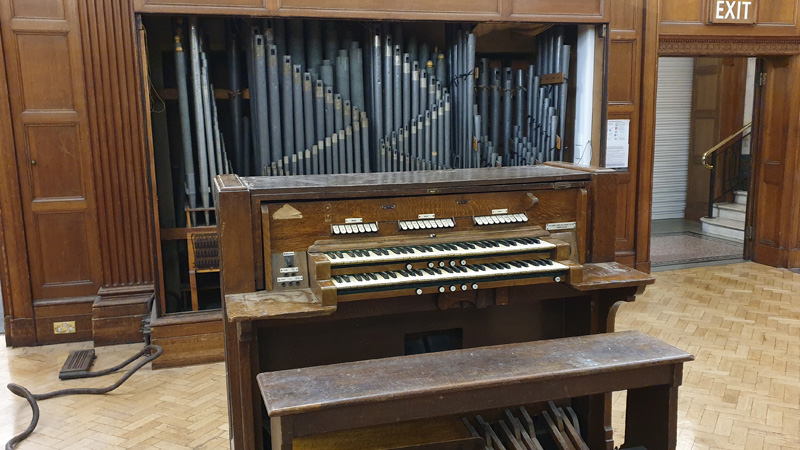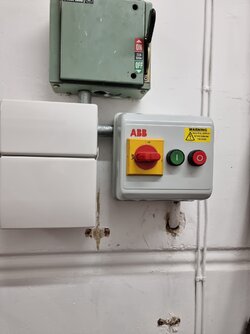L
Lucien Nunes
I'm about to replace the cable from a starter to an existing 2hp 3-phase 3-wire motor adjacent. The motor is rigidly bolted to a bed and has a direct shaft coupling, i.e. it is not on slide rails. Normally, I would use stranded singles in steel conduit with a flexible conduit link to the motor, not least because the motors are usually larger and 6-wire. In this particular situation it is more convenient to use FP because that can easily pass through the structure.
The obvious thing to do at the motor end is to make a loop of FP and take it straight into the motor terminal box, but for no obvious reason this feels cheap. Maybe it's the FP's solid conductors but you would do it with MI which is even more solid. The alternative is to terminate the FP into an adaptable box adjacent and make a loop with flexible conduit and singles, which adds a set of connections but for some reason feels neater. In other circumstances there might be an isolator in this position but as the starter is 1m away and has one itself there's no point fitting another. WWYD?
The obvious thing to do at the motor end is to make a loop of FP and take it straight into the motor terminal box, but for no obvious reason this feels cheap. Maybe it's the FP's solid conductors but you would do it with MI which is even more solid. The alternative is to terminate the FP into an adaptable box adjacent and make a loop with flexible conduit and singles, which adds a set of connections but for some reason feels neater. In other circumstances there might be an isolator in this position but as the starter is 1m away and has one itself there's no point fitting another. WWYD?













